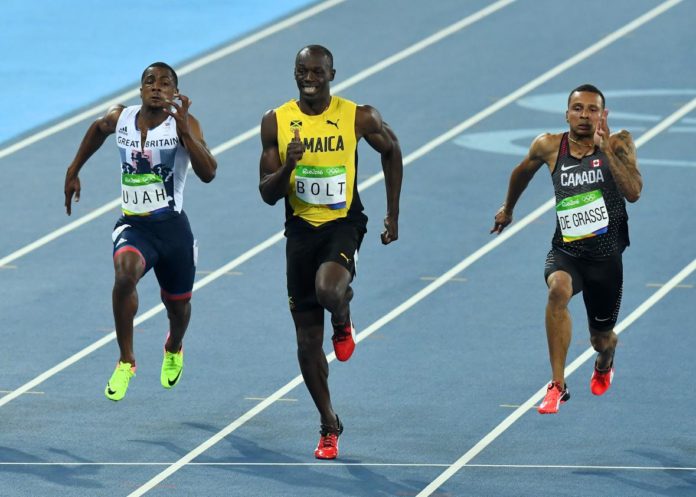World champion sprinter Usain Bolt is a Jamaican sprinter and currently the fastest human in the world. He is the first person to hold both the 100 meters and 200 meters world records since fully automatic time became mandatory. But a new study suggests that his right and left legs perform differently. It thus challenges current scientific assumptions about running speed.
According to the study, Usain Bolt may have an asymmetrical running gait. SMU researchers assessed his running mechanics and found asymmetrical running gait. While it is not noticeable through naked eyes but the study suggests Bolt’s mechanics may vary between his left leg to his right.
Andrew Udofa, a biomechanics researcher in the SMU Locomotor Performance Laboratory said, “The existence of an unexpected and potentially significant asymmetry in the fastest human runner ever would help scientists better understand the basis of maximal running speeds. Running experts generally assume asymmetry impairs performance and slows runners down.”
“Our observations raise the immediate scientific question of whether a lack of symmetry represents a personal mechanical optimization that makes Bolt the fastest sprinter ever or exists for reasons yet to be identified.”
The intriguing possibility of Bolt’s asymmetry emerged after the SMU researchers decided to assess his pattern of ground-force application. They calculated the “impulse” for each foot.
Scientists found that every time, the magnitude of force application differed between legs in the steps we have analyzed so far.
Research led Peter Weyand said, “If a runner has a smaller impulse, they don’t get as much aerial time. Our previous published research has shown greater ground forces delivered in shorter periods of foot-ground contact are necessary to achieve faster speeds. This is true in part because aerial times do not differ between fast and slow runners at their top speeds. Consequently, the combination of greater ground forces and shorter contact times is characteristic of the world’s fastest sprinters.”
Instead of testing Bolt in the lab, scientists used a new motion-based method to assess the patterns of ground-force application. By using existing high-speed race footage available from NBC Universal Sports, they identified Bolt and other elite runners.
Udofa analyzed 20 of Usain Bolt steps from the Monaco race, averaging data from 10 left and 10 right. Scientists used a new method, called the two-mass model to determine the ground reaction forces. This enables motion-based assessments of ground reaction forces without direct force measurements.
Weyand said, “The model may make possible because direct force measurements are not required. These include investigations of the importance of symmetry for sprinting performance. The two-mass model may facilitate the acquisition of data from outside the lab to help us better address these kinds of questions.”
Udofa said, “The two-mass model provides us with a new tool for assessing the crucial early portion of foot-ground contact that is so important for sprinting performance. The model advances our ability to assess the impact phase force and time relationships from motion data only.”
